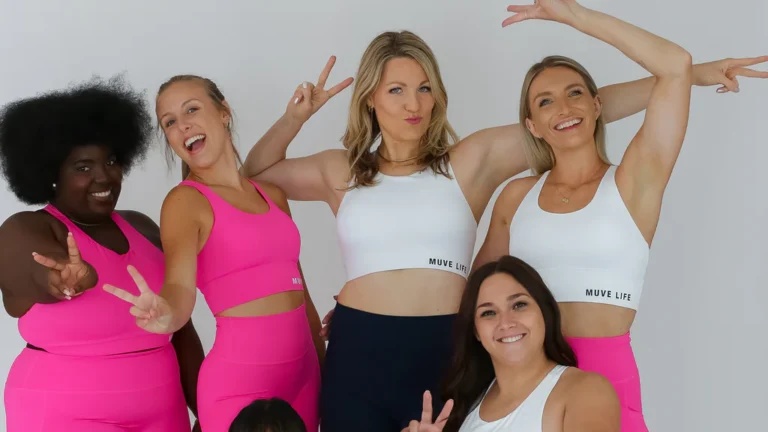Whether it’s hitting the gym, going for a run, or doing yoga, the right bra must be worn. Regular bras are conducive for everyday use, whereas sports bras are built to move, reduce pain, and rightly support during physical activity. What are the real things that separate these two kinds of bras? And why is one less suitable for workouts? Knowing the principal differences between a sports bra and a regular bra will set you on a path of better uplift and comfort in and out of the gym.
Function and Purpose
A sports bra was made to give more support when the breasts could be bouncing during active movements, and in doing so, to lessen the bounce from the breasts, breast movements, and weight distribution more equally on the shoulders and back.
With all methods of exercise, especially high-impact procedures such as running or aerobics, your breasts move concurrently. The structure of a sports bra confines that movement to avoid pain and protects the ligaments in the breast tissue from being stretched over time. Regular bras just aren’t designed for such kinds of impact.
Support and Structure
Support and movement are the two elements that obviously distinguish any sports bra from a regular bra. A regular bra has underwires, moulded cups, and adjustable straps designed to lift and shape the breasts. Varied in support and style, regular bras may include T-shirt bras, push-up bras, balconettes, and so forth. They are generally oriented towards comfort and aesthetic appeal, not to the issue of motion control.
In contrast, sports bras correspond to three main support categories: low, medium, and high impact-intensity-adapted. They translate to the kind of structural design:
Compression types press against the breasts to limit movement.
Encapsulation types have a cup for each breast and exert an effect very similar to that of a conventional bra.
Combination types use both compression and encapsulation for maximum control.
It is this type of support that makes sports bras functionally suited for a workout.
Material and Comfort
Materials used in sports bras and regular bras are another essential, distinctive factor. Regular bras usually use cotton blends, lace, and satin, which are supposed to look and feel soft against the skin. Even though they may allow some breathability, they are actually not optimised much for moisture management or long-term wearing during intense movement.
On the other hand, sports bras are made from performance fabrics that manage moisture, stretch, and allow air to pass through. Materials such as polyester-spandex blends help keep sweat away from the skin, decreasing the chances of chafing and giving an incredible range of motion. The fabrics dry in no time, which works well for working out or when the weather is hot.
In contrast, companies such as Venatrix Athletica Activewear may be counted among the best in the business for manufacturing blue workout bras with a focus on performance. The design and fabric are tested for breathability and function, and suit every activity, from gym workouts to runs out in the open.
Fit and Coverage
Fit is one other major difference between a sports bra and a regular bra. The purpose of a sports bra is to be on the snug side, holding the breast tissue in place, minimising movement while still letting you breathe and move around comfortably. Most sports bras also offer full coverage so that spillage might occur during dynamic movements.
Regular bras, conversely, also come in cuts and styles, some with the least possible coverage merely for aesthetic purposes. These might appear more flattering beneath certain outfits, but they have nothing to provide that secure, locked-in feel an active movement requires.
Also, the straps of sports bras are wide; this is one reason for their racerback style. Along with an elastic underband that helps distribute weight more evenly and prevents pressure points from forming. While regular bras with thin straps will tend to dig into the shoulders and offer uneven support, they also have this issue.
Longevity and Durability
Due to their hardwearing construction and performance materials, sports bras tend to last longer if used correctly. They are made to take the washing, the sweat, and the stretch without really losing their original shape. Regular bras, on the other hand, though inclined toward comfor. Tend to wear out rather fast when put to intense activity or frequent washing.
Regardless, proper care is important for both types. Hand washing or a gentle cycle combined with air drying should get the job done to maintain any bra.
Conclusion
The casual hybrid serves a different purpose when compared to a sports bra. However, they are both essentials in any woman’s closet. Real support and shaping go into the daily wear of a casual bra. Whereas a sports bra is supposed to protect he body while physical movements take place. Now that brands like Venatrix Athletica Activewear are offering performance-inspired athlete gear, it is easy to walk away with fluorescent blue moisture-wicking supportive blue workout bras that fit the bill for casual wear.


